The Farey Room
The Farey Room contains pictures of transformations of the
Farey Number Mapping (Farey Tree), and through transformations
of the Continued Fraction Mapping. Some of the theory behind these
pictures is developed in the following papers:
Please see also the newer, nicer version of
this web page.
Continued Fractions
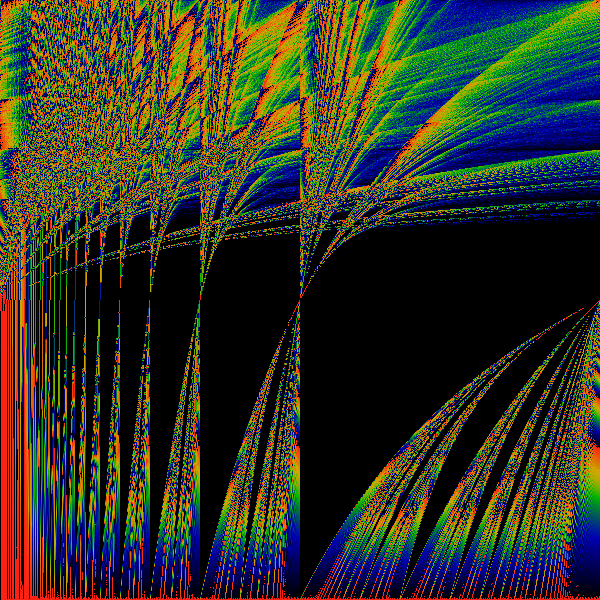
The above shows the most basic transformation, where all
occurances of "1" in the numerator of continued fraction expansions
of the real number are replaced by "z".
That is, if x = 1/(a+1/(b+1/(c+1/(d+ ...))))
then f(x) = z/(a+z/(b+z/(c+z/(d+ ... )))) mod 1. This f(x) is used to
generate a Hausdorff measure for a given (x,z). The measure is shown as
a color, with black=zero, blue=small, green=larger, yellow=large, red=larger
still. Note that as z gets larger than one, it is technically undefined,
as the continued fraction rockets out of control. However, computationally, x
was always a rational (but barely ...), and so each continued fraction
terminates.
Along the horizontal axis, real numbers. Along the
vertical axis, z, ranging from 0 to 2.
Note the psuedo-Arnold's Tongues which occur for all irrational
values on the horizonal axis. This is essentially due to the fact that
the mapping is discontinuous for all rational values. A cross-section
of this picture (a horizontal line drawn through it) is a Cantor set.
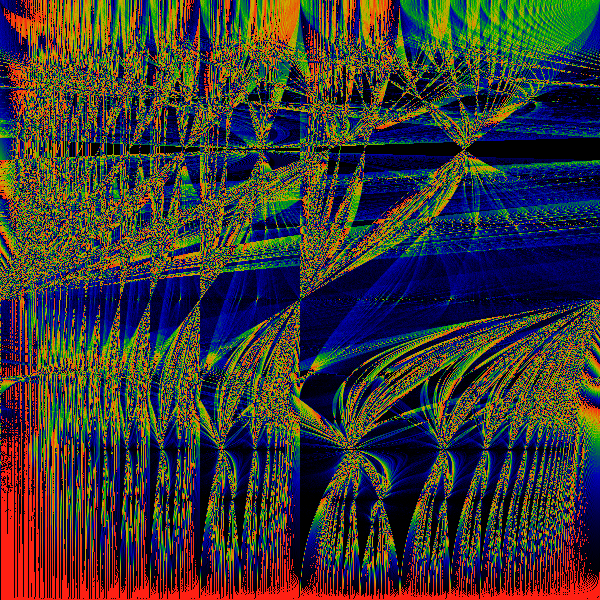
Cosine Transform 1 -> cos (z)
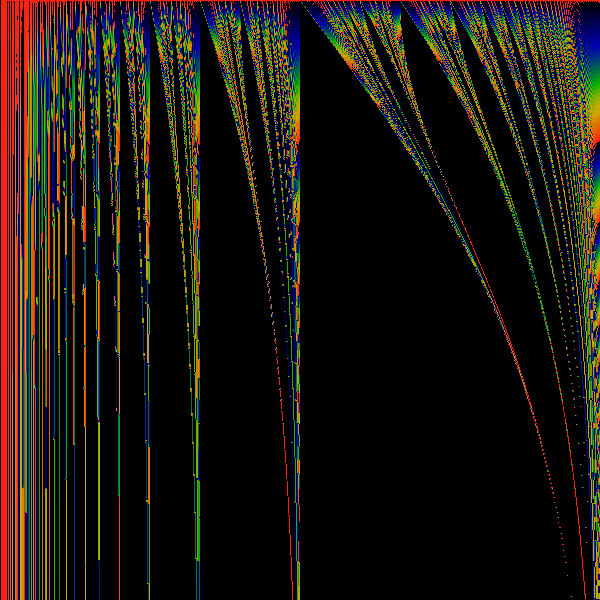
Exponential Transform 1 -> exp (z)
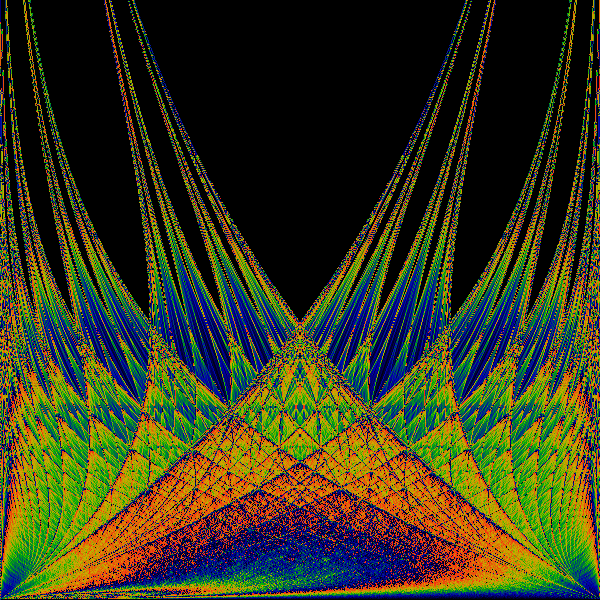
An attempt to create a symmetrized version
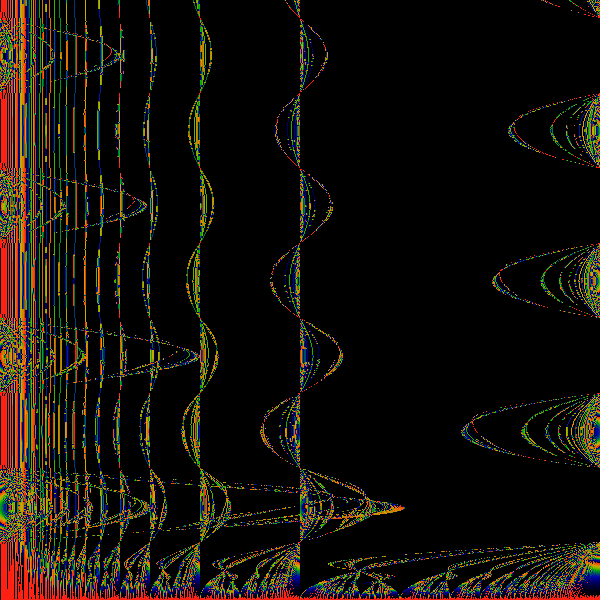
Spherical Bessel (j0) Transform 1 -> j0(z)
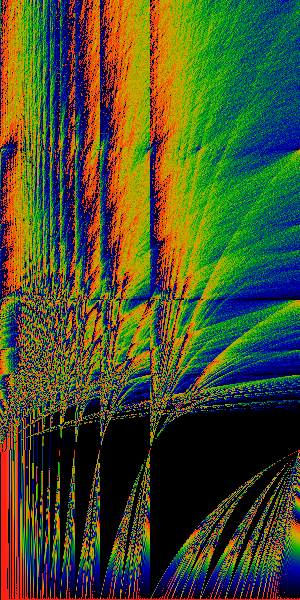
Tall
 Wide
Wide
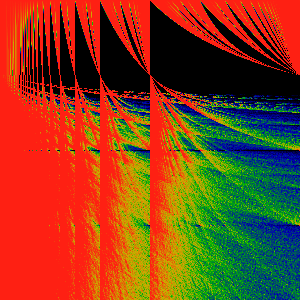
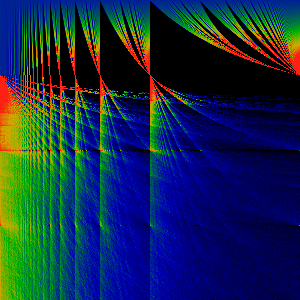
Farey Transforms
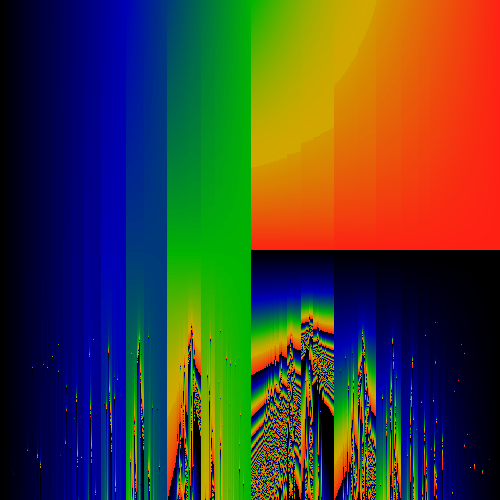
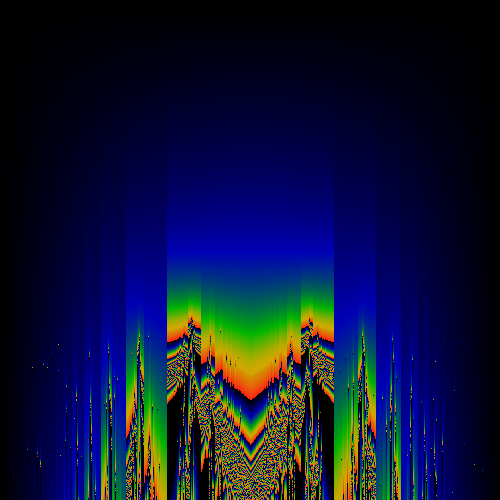
Symmetric component of above image
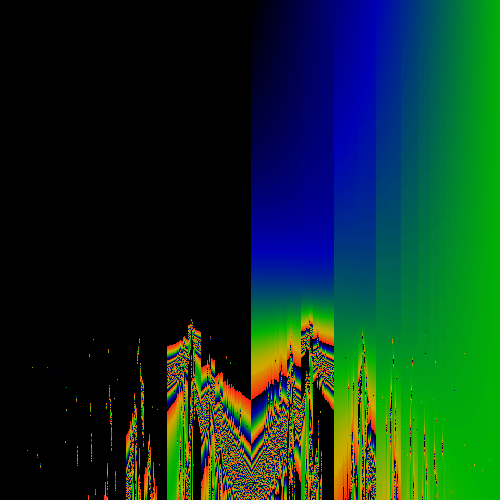
Anti-symmetric component of above image
Most of these images were generated during January and February of 1994,
in Austin, Texas. The work was inspired by a Christmas reading of
the "Contorted Fractions" chapter of John Conway's "On Numbers and Games".
Linas Vepstas February 1994
References
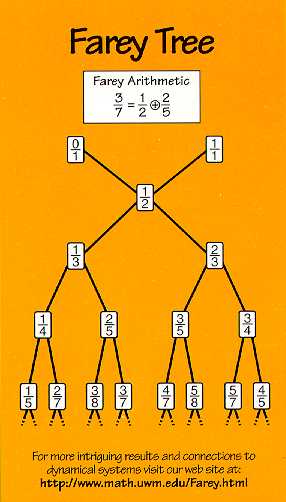 The quickie bibliography below was scammed from
http://www.math.uwn.edu/Farey.html
The quickie bibliography below was scammed from
http://www.math.uwn.edu/Farey.html
- J.C. Lagarias and C. Tresser, A walk along the branches of the
extended Farey tree, IBM Jour. of Res. and Dev., v. 39, 1995.
- J.C. Lagarias, Number theory and dynamical systems, Proceedings
of Symposia in Applied Mathematics 46, 35-72, 1992.
- R. Siegel, C. Tresser, and G. Zettler, A decoding problem in
dynamics and in number theory, Chaos 2, 473-493, 1992.
- G.H. Hardy and E.M. Wright, An introduction to the theory
of numbers, fifth edition, Clarendon, Oxford, England, 1979.
- J. Farey, On a curious property of vulgar fractions, Philos.
Mag. & Journal, London 47, 385-386, 1816.
- Anonymous author, On vulgar fractions, Philos. Mag. &
Journal, London 48, 204, 1816.
- J. Farey, Propriété curieuse des Fractions
Ordinaires, Bull. Sc. Soc. Philomatique 3, No. 3, 112, 1816.
- J. Franel, Les Suites de Farey et le Problémes des
Nombres Premiers, Gottinger Nachrichten, pp. 198-201, 1924.
- P. Cvitanovi\'c, Farey Organization of the fractal hall effect,
Phys. Scripta T9, 202, 1985.
- P. Cvitanovi\'c, B. Shraiman, and B. Söderberg, Scaling
laws for mode locking in circle maps, Phys. Scripta 32, 263-270, 1985.
Copyright (c) 1994 Linas Vepstas

The Farey Room
by Linas Vepstas is licensed under a
Creative Commons
Attribution-ShareAlike 4.0 International License.







 Wide
Wide





 The quickie bibliography below was scammed from
http://www.math.uwn.edu/Farey.html
The quickie bibliography below was scammed from
http://www.math.uwn.edu/Farey.html
